- What is the “Home Area Network” and how does it relate to “smart” meters?
- Will all new appliances have these RF transmitters in them for the HAN?
- If my utility makes my “smart” meter “radio-off”, will that shut off this second “HAN” transmitter, too?
- What can I do to avoid these new emitting appliances? How can I register my objection to this extra layer of RF radiation in the home?
___________________________________ BACK TO FAQ INDEX
Q: What is the “Home Area Network” and how does it relate to “smart” meters?
Inside many “smart” meters is the capacity to connect wirelessly with home appliances that contain RF antennas on the same frequency (usually 2.4-2.5 GHz). This is supposed to mean you can control your appliances and monitor their electrical usage and so on. Google “zigbee” for some technical info. It is this system that will produce detailed data on your home’s electricity usage—right down to which appliance was used when and for how long.
More importantly, what this new technology in reality means is that households will be adding layer after layer of wifi-type RF emitters, one in each appliance, throughout the home. The effectiveness of a Home Area Network for saving energy has not been shown conclusively. In the UK, it was recently observed that the novelty of such a system wore off quickly, and after a few weeks, people stopped utilizing the data. It also created discord between family members!
Think about it: an RF transmitter capable of transmitting hundreds of feet, installed and transmitting from the moment they are plugged in, in each and every appliance in your home. Here’s a story about one person who tried unsuccessfully to purchase an appliance without the RF transmitter.
Q: Will all new appliances have these RF transmitters in them for the HAN?
As far as we understand, appliance manufacturers are moving to install them in new appliances. Here’s an example, GE’s “Brillion” program. Their “smart” appliances include dishwasher, washer/dryer, fridge, water heater, oven, and thermostat.
Q: If my utility makes my “smart” meter “radio-off”, will that shut off this second “HAN” transmitter, too?
We do not know. This issue hasn’t been discussed in the opt-out process in California in any detail, and since the meters are a “black box”—the internal details are a proprietary secret—there is no obvious way to find out. See the section on measuring RF yourself .
Q: What can I do to avoid these new emitting appliances? How can I register my objection to this extra layer of RF radiation in the home?
Contact manufacturers directly to express your desire to have appliances free of RF emitters. Write, call or email. They won’t change unless they see that there are people who don’t want this new RF source inside their homes. Talk to friends and family, to let them know about this—people will be buying these appliances without knowing that this wireless radiation is on from the moment you plug it in. There is no “off” switch for the RF chip. Disabling the transmitter is likely to void your warranty.

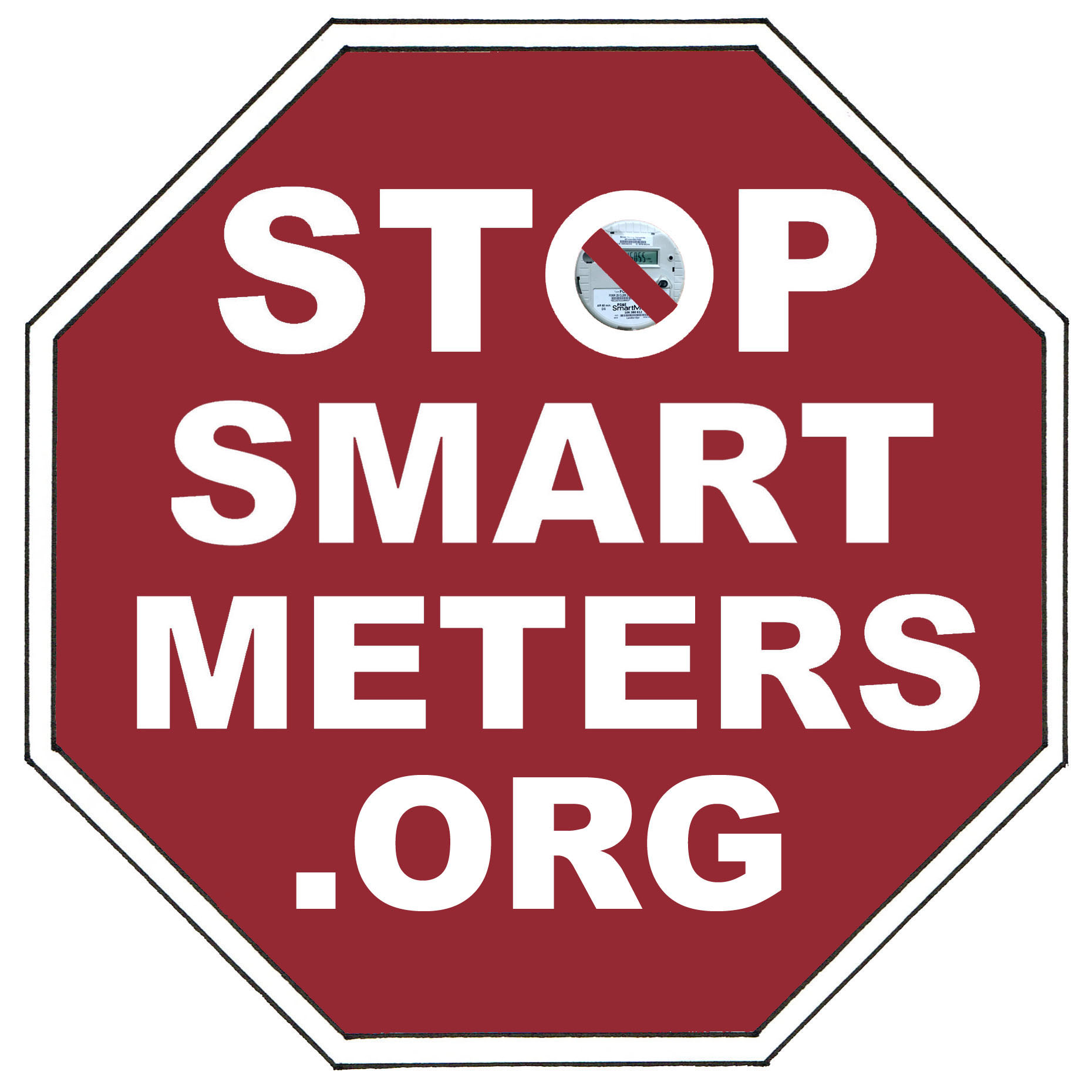
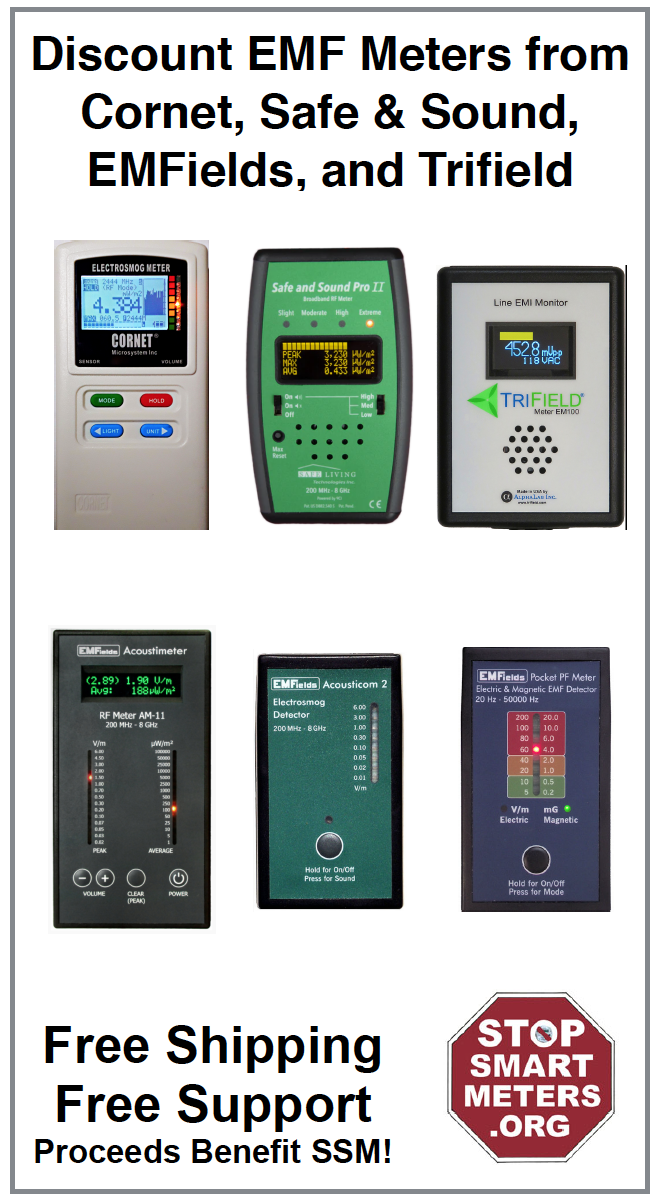
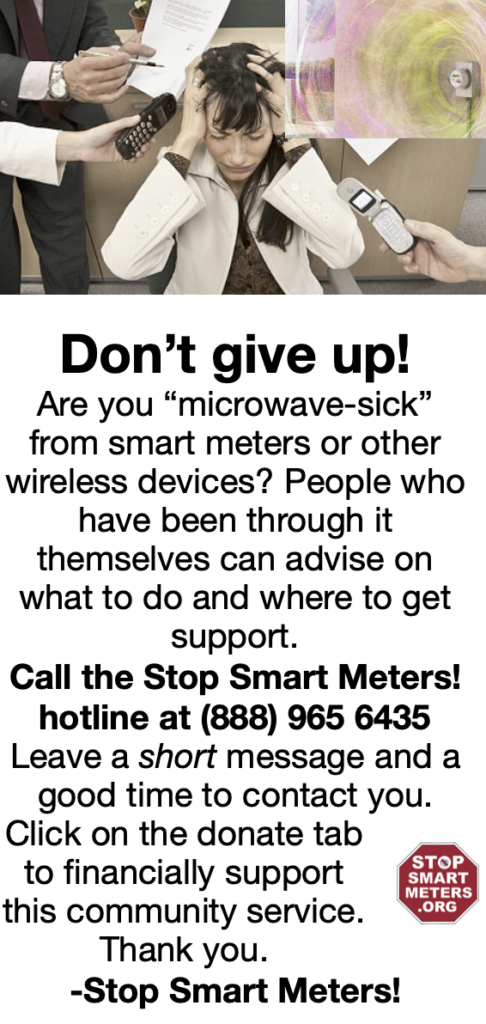
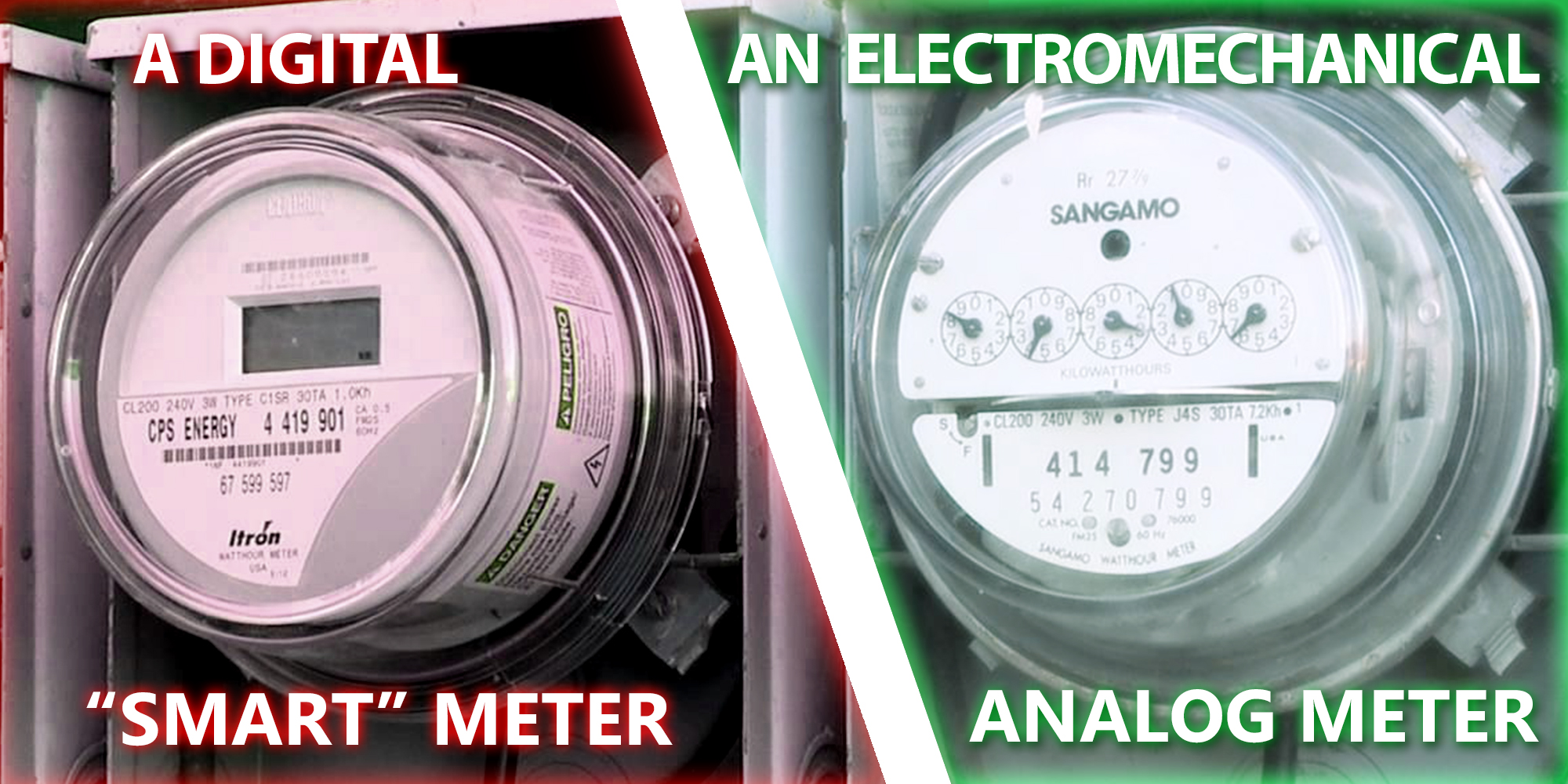



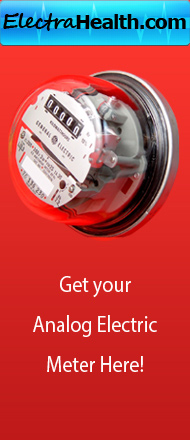
I live in northern California, and the utility company allowed to provide us with gas and electric service is Pacific Gas and Electric (PG&E).
PG&E sent me and millions of other customers a sales brochure with the letter announcing their desire to install an automated meter at my house (which I did not allow them to do !).
Here is a word for word unedited excerpt from that slick glossy sales brochure about the features of their Home Automation Systems being sold as a partnership with the ZigBee/HomePlug Alliance corporate venture., and then I will explain what this means after.
“Automate your home energy use.
In the future, a Home Area Network (HAN) will give you the ability to automate your home energy use and take advantage of new time-variable pricing plans that enhance the value you receive from every dollar you spend on electricity. With a HAN, you’ll be able to:
* Keep informed of your current energy use and it’s cost using in-home displays.
*Participate in utility pricing and Demand Response programs, using communicating thermostats to achieve optimal balance between comfort and cost.
*Purchase and use home energy management systems together with automated appliances and electronics to optimize the value from your energy use.”
So, these new HANs being marketed are just one of the many automation systems that a customer can purchase. These automation systems are very expensive, and for residential use of an average income household, are not cost effective.
These new appliances fitted with the monitoring chips are expensive also, even though the installation of the chips was paid for by the taxpayers under the American Recovery and Reinvestment Act (ARRA).
The customer must purchase everything for this system, the appliances, the receivers, the software interface, the computers and the “in home display monitors” that show how much energy that these “chipped” appliances are using. The appliances send the usage on a transmitter @2415 MHz at about 0.30 watts of RF to the customer purchased receiver. The meters also have a 2415 MHz transmitter to send on/ off commands to the special “enabled” smart thermostats that will control the 24 volt wired compressor motor relay in air conditioning units on or off only. These on/off commands come from the utility radio networks when they want to ration power in the future. They are one way only (not interactive) and the ONLY commands that will ever be received from the PG&E radio network inside a customers building.
The HAN systems that the customer purchases are not interactive (two way) with the utility companies radio networks through the new meters.
The usage data from the customer purchased new “chipped” appliance is sent to the customer owned equipment for monitoring, none of this information is sent to the utility company. The utility company is having enough trouble gathering and managing the customers total usage data. The utilities companies do not have the capability or desire to manage customers appliances, they are overwhelmed as it is.
And not all new appliances will be “chipped”. No toasters, blenders, vacuum cleaners, can openers, drills, saws, juicers, any kind of lights, fans, water pumps, dehumidifiers, air compressors, air pumps, telephones, computers, printers, stereo systems, electric blinds and louvers, elevators, hillevators, document shredders, garbage disposals, battery chargers (except electric vehicle chargers), automation system controllers or any other kind of electronic or electric device will ever be “chipped”. It is only a select few new large appliances that the taxpayers have involuntarily spent millions of dollars to fund the corporate global welfare fund “chipping” program that will ever be monitored by the expensive new customer purchased HANs, and none of that monitoring information will ever be transmitted to the utility company servers, there is no interactive function with the HANs and the utility, that information is not sent to to the utility, it stays with the customer, and the customer can link that information to the internet if they want to for remote viewing.
Of course the customer can simply not buy any new “chipped” appliances, and of course the customer can simply not buy any HAN systems.
I am no appliance technician, but I would think that it would be a very simple procedure to jump a tiny monitoring chip. One tiny drop of solder should do the trick (a little dab’ll do ya).
For people worried about privacy and interference on their automaton systems including the yet to be marketed HAN systems, you need to know this:
All automation systems have a house code and an address code for each appliance module. Every device has it’s individual address because that is the only way that the controller can distinguish what device that they are monitoring or controlling, and each system has a house code so as not to be in conflict with a neighbors system. Programming these codes is done in several ways, usually it is done with 2 rotory micro switches on the module, but more common now is to “flash” the controller to recognize the device by pushing a little micro switch on the device when the controller is in program mode.
I have designed and installed hundreds of residential and commercial building automation systems, and many times I have had to change the house code because of interference from other electronic devices or neighbors systems . This is true for radio and powerline carrier automation systems.
The Zigbee data from the “HAN” is really going to make it easy for someone to target your house for surveillance. No encryption on that data!
It may include the transmission of a unique electronic serial number of the meter. That wonderful “feature” will be to help in the installation of other devices so that a “house number” doesn’t have to be configured to prevent conflict with the other meter or devices next door.
Directional antennas have been available since radio was invented. Not hard to tell which meter is transmitting even without a “house code”.
Telling if you are home will be no problem. Compiling data on your daily routine is no problem. Telling if you went away for a vacation is not a problem even with timer controlled lights.
“Smart” Meters are a privacy risk, no doubt.
If you are unfortunate enough to have a “Smart” Meter, either get the opt-out, or an alarm system and hope that the cops get there fast enough.
I really don’t know why they are calling this a opt-out when it should have been a opt-in situation in the first place. We are talking like they actually have the ability to force these on us.
If one is worried about privacy of ZigBee and HomePlug systens, the customer should not buy it. PG&E sure isn’t going to give each customer a few thousand dollars to pay for the receiver, software, computer and monitor, plus installation and programming, not to mention the cost of buying all the large appliances with ZigBee transmitters in them. The only thing that PG&E will pay for is a ZigBee enabled “smart thermostat” and they will give the customer a one time credit of $25 if the customer volunteers to “participate” in the smart thermostat program. PG&E will even come inside your home for free to install a smart thermostat. The smart thermostats are not interactive with the radio revenue networks through the new meters, they are one way only, they take commands in , nothing goes out, and they can easily be overridden if the customer is not comfortable with no compressor motor on for the cooling. Nothing to worry about with the security of the smart thermostat program.
Again Redi, you are spreading incorrect information. You didn’t read my post. Your lack of knowledge in this area is not helping people, it’s just continuing to confuse them.
Again, the “Smart” Meter will be transmitting CONTINUOUS electrical use data via the unencrypted ZigBee signal. NOTE: ZigBee data is NOT ENCRYPTED !
And just to be clear, this ZigBee data is not the same frequency as the signal that is transmitted to the power company. This is a separate signal for the “HAN”, for use inside the home (but transmitted outside too).
Some people may think that’s a short range signal because it’s low power. But there are high gain antennas available off the shelf and also high gain “low noise” amplifiers that can allow a ZigBee signal to be picked up from up to one mile away or more.
The meter is outside so the signal is actually stronger for someone monitoring it from outside.
Figuring out which meter data is which would be a simple task of walking or driving by for single homes. For apartments it would take a little more work since the meters are in clusters.
The ZigBee data will have to contain a meter number or other meter specific ID so that you will be able to tell your data from your neighbors.
Oh, and if you have ever wondered how much your neighbor’s power bill is, you can now do that, just monitor his meter instead!
It’s a privacy problem for sure. You have no choice here either, just because you don’t buy some enabled appliance, this signal is still being transmitted from the meter.
Saying people shouldn’t worry about their privacy with these “Smart” Meters is incorrect and anyone who doesn’t think protecting their privacy is important is simply not informed or just naive.
Most naive people learn how important their privacy is AFTER they have their identity stolen and find out how hard it is to correct that mistake, if they ever can.
The usage of a new “chipped’ appliance it transmitted by the appliance, not the meter, sorry to pop your bubble.
The meter transmits electrical usage information via the ZigBee HAN network. I said that, and here it is again.
What about that don’t you understand?
It’s that someone out there can read your meter on a regular basis, minute by minute that’s the privacy violation.
In this case there in no encryption on the meter reading data.
Now I know you just turned on a light, I know your TV is running or that you just took a shower. I know you are home and I know that a lot of other people are home because I can monitor them all from a mile away.
Being a somewhat technical guy, why don’t you get this?
It’s not science fiction, it’s fact. Ask anyone who knows radio and digital communications via computer.
They sell remote electrical usage monitors that read the ZigBee data and display it in your kitchen. Go look them up.
You buy one, turn it on and you start reading your electric meter, in real time, second by second.
How can that happen if the meter isn’t transmitting CONSTANT electrical usage data?
http://onzo.com/company/press/2011/04/15/onzo-awarded-zigbee-certification-for-new-in-home-display/
“gives consumers real-time information about how much electricity they are using in their home and how much it is costing them.”
Oh and “meters send out over 190,000 signals every day” sounds like every 4 hours to me!
It’s transmitting it using an encrypted channel established during the network pairing process – similar to how you pair your Bluetooth headphones before you can receive phone calls.
There are real reasons to be concerned about flaws in the implementation (search for “ZigBee Exploited”), let alone the ability to access data at the energy provider’s end (which, incidentally, is much more likely to be exploited for profit); but it’s not like they haven’t applied *any* encryption.
President Obama gave the Whirlpool Corporation in 2010 $50 million of our taxpayer dollars to install monitoring chips in their appliances. Those chips will transmit individual chipped appliance data to a HAN system if a customer chooses one. The HAN’s are not fully developed as of yet, and are not available for sale (as if anyone can afford them).
Last week (Oct. 28), Whirlpool announced that it is laying off 5000 workers, due to very low demand for their new chipped appliances. They reported sales were down 36 percent from a year ago.
So, Whirlpool takes $50 million from us under the ARRA stimulus tax money, and promptly lays off 5000 workers, another greenwash project down the drain.
Perhaps the HAN marketing scheme has already gone clunk, even before it hits the market.
With our economy in shambles, people may not be able to afford all these new large chipped appliances, the computer interfaces, computers and “in home” display monitors that make up the HAN systems.
If people really need to see how much energy their appliances are using, they can read the rating plate instead, bye bye HANs. I hope the HAN project is a dismal marketing failure, A CLUNKER !
After posting about the new meters and HAN systems for about 2 years, I have been reading some really far out science fiction about the program.
Finally today I called the phone number that was on the sales brochure sent to me by PG&E for information about the brochure and the promotion. The number is:
1-866-743-0263. I spoke with a polite women in the Sacramento office.
My first question was about the “in home display” and about claims that it showed the real time usage that is also displayed on the meter. She never heard of it, and put me on hold for about 5 minutes while she talked to her supervisor.
She came back and said the only way a customer will be able to read the present usage in real time is to go out and look at the new meter.
Then I asked about the claim that a customer can go to PG&E’s website, enter their personal account information and look at their previous days usage.
She said, “that’s something that we are working on” and if 80 percent of the customers are interested in that service, then they will start “working on it”. She said that all that 80 % must have new meters that are actually connected and being remotely read, not new meters that are transmitting but not connected and still being read manually.
Then she said that the customers have always been able to log on to their account and view the previous months and years usage.
When I asked her about the part in the brochure that said,” With a HAN, you’ll be able to purchase and use home energy management systems together with automated appliances and electronics to optimize the value from your in-home energy use.”
She started to go off and talk about appliances and lights being controlled by remote using an Ipad , and then I interrupted her and said that I am aware of automation systems that do this now, but aren’t all these appliances, modules and controllers paid for the customer, and that they do not communicate anything to the meter or the utility company ? She said “that’s right”.
Then I asked her about the price alert programs. She explained that no price information is sent on the utility radio system to the meters, the price differential programs and the actual price per KwH is only available by internet or mobile phone alerts.
Then I asked her about the voluntary thermostat program, and how that the only thing that will ever be controlled by the utility company is the compressor motors on air conditioning units if a person has a smart thermostat. She said, “that’s right”, and I reaffirmed that by saying that this a one way command only, and the power company does not monitor the temperature of a thermostat reading because they can’t, it is not interactive, she said “that’s right”.
So to sum it up, these simple utility watt hour meters measure the total usage , and all utility companies bill in kilowatts used per hour, and the new meters (when connected) transmit that total usage to the utility company. There is no possible way that the utility company knows what individual appliances are using, even if the customer did purchase a HAN system.
There have very many great science fiction articles and videos from around the world about these “surveillance meters”, and none of them are fact, but so far I have only seen one science fiction article about the Origin of SmartMeters.
Do a Google search on the Origin of SmartMeters, you will find one written by a PhD.
.
Sorry, do Goggle a search of “Origins of SmartMeters”, you will see the article at the top of the page. That article is now all over the internet.
The smart grid also allows the elcrteic company to monitor usage at each smart meter, thus allowing the elcrteic company at their desecration to turn down or turn off your elcrteic. For example, in the summer if you have your air conditioning on and the elcrteic company thinks it should not be on they can monitor your meter and simply provide you less power. Once again 1984 is here, but few will complain, so the smart grid will happen.
Ignorance at it’s best. Yes, the smart meters allow the power company finer grained monitoring, but NO they won’t “secretly” do anything to your power. You have to opt-in for voluntary power cuts during high demand – but that is nothing new. I was part of a similar program 20 years ago LONG before smart meters came along.
Just because those features are POSSIBLY not enabled now, they will be in the future. These meters have the ability to do all of these “science fiction” things you have been talking about.
A lot of these people at the power company are still catching up with all the “high tech” stuff they now have to deal with. So I wouldn’t give what they say too much weight.
I would rather go with the actual manufacturer specs on the particular meter types they are installing. And they don’t have to use only one type of meter or go with one particular manufacturer for all the millions of installs in one area.
This website serves more than the PG&E area, and there are a lot of different types of “smart” meters out there. Most States that have rolled out the “smart” meters have implemented all the features, including near real time electrical usage data from the web. PG&E is catching up.
Again, you are confusing the HAN issue, you really need to do more research. The customer doesn’t have to buy ANY HAN EQUIPMENT for the HAN real time power use to be broadcast via the ZigBee transmitter.
And yes, the OLD – really OLD – “thermostat program” was a one way transmission from a central transmitter, possibly a FM subcarrier or pager frequency. And the device on people’s houses was a simple receive only device.
Not anymore! With “smart” meters they will be able to do anything they want!
It’s not “science fiction” when the power company can COMPLETELY RE-PROGRAM the internal CPU from remote.
They can roll out whatever type of networking stuff they want in the future. And they can do it in small steps so no one notices.
These “smart” meters are really creepy!
yes, smart meters can be remotely programmed and software upgraded (i.e. “COMPLETELY RE-PROGRAM the internal CPU from remote”) – just like about any network connected device in existence can… big deal. But, why do people insist on propagating the conspiracy theories that the power company is out to get you… ooohhh!
Fact is: the smart meters provide finer grained power monitoring that help you to reduce your power consumption. Since our power company (PEPCO) installed the smart meter, I’ve managed to reduce my consumption by about 20%. That’s great! I can login to their website and see my usage down to the hour – in fact I wish I could see more! I rather enjoy getting their nagging emails telling me I’m using more power than I should because it helps me to reduce and save money.
All this technology is being put in place *to benefit you*, reduce costs and make our planet more sustainable, not to spy on you.
I was reading about future devices to be used to monitor and control individual appliances and devices, something that the smart meters can’t do.
The article referred to a product called MeterPlug that is planned to be sold in the future.
So I looked it up on the internet, anyone who is interested in Home Area Networks should definitely check it out. This MeterPlug has nothing at all to do with smart meters, and does not communicate with them, but it debunks the myth about smart meter doing those monitoring and control functions.
The customer can buy small modules that plug into any 3 pronged receptacle, (only up to 4 per wi-fi gateway), which is also purchased by the customer. Note , any more than 4 modules need a network specialist and additional expensive equipment. Also, these modules only work on standard 120 volt circuits.
This system does not transmit any data to the utility or outside of the house, and requires a smart phone or tablet that is Bluetooth enabled. Applications are bought and loaded to the smart phones to use this system, and the applications are programmed with the latest local utility rates per kilowatt hour, even if there are premium rates for certain hours.
So, the carefully worded advertising brochures that the utility sent out about 5 years ago talking about how Home Area Networks being available in the future may actually come true someday, but they still have nothing at all to do with smart meters, and the utilities never did say that HAN’s were connected to smart meters. So, the utilities can’t be sued for false advertising, but the utilities misled many people.
Note: a lot has happened in the last 5 years, but the MeterPlug devices are not yet on the market. Right now, it is not know how much of a market will exist for HANs, right now the big marketing push is for home security (cameras, sensors and paid monitoring services), on-off remote lighting control, NEXT thermostats and electric door locks. These are being promoted as home security and control systems and require a broadband internet connection, and the customer must purchase and have installed all the devices which are expensive. Again, these home security and control systems have nothing at all to do with any smart meters. The extra fee tacked onto your cable bill for these extra services is often bundled with internet, TV and phone service, and does not include the price of the devices or the installation.
I hope that none of you who are behind the stopping of smart meters have cell phones. If so, you better get rid of them asap. Having worked in that industry, I can tell you that you every move can be monitored – literally. A cell phone is FAR FAR more of an invasion of your privacy than any smart meter ever will be.
Get a grip folks. Embrace the technology for what it is: a way to help you and the utility reduce energy consumption so that our planet is more sustainable.